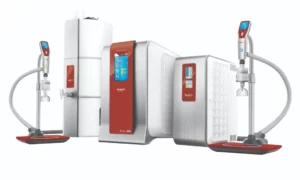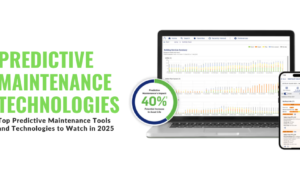Introduction
Air conditioning and plumbing systems are critical components of any modern home or commercial building. These systems not only ensure comfort but also play a crucial role in maintaining the overall health and functionality of a property. Understanding the intricacies of air conditioning and plumbing can help homeowners and businesses make informed decisions about installation, maintenance, and repair. In this article, we delve into the essentials of air conditioning and plumbing systems, exploring how they work, common issues, and best practices for keeping them in top condition.
Understanding Air Conditioning Systems
Air conditioning Las Vegas systems are designed to regulate indoor temperatures, ensuring comfort during hot weather. They work by removing heat and humidity from the indoor air and replacing it with cooler air. Here’s a closer look at how these systems function and the different types available.
How Air Conditioning Works
- Refrigeration Cycle: The core of any air conditioning system is the refrigeration cycle, which involves the evaporation and condensation of a refrigerant to absorb and release heat. This cycle consists of four main components:
-
-
- Evaporator: Absorbs heat from indoor air.
- Compressor: Pressurizes the refrigerant, raising its temperature.
- Condenser: Releases the absorbed heat outside.
- Expansion Valve: Lowers the refrigerant’s pressure, cooling it down before it returns to the evaporator.
-
- Air Flow: Fans and blowers move the cooled air through ducts and into living spaces, ensuring even distribution of temperature-controlled air.
- Thermostat: This device allows users to set their desired temperature, controlling the air conditioner’s operation to maintain comfort.
Types of Air Conditioning Systems
- Central Air Conditioning: Common in larger homes and commercial buildings, central air systems use a network of ducts to distribute cooled air throughout the building. They are efficient and can cool large areas uniformly.
- Split Air Conditioning Systems: These systems consist of an outdoor unit and one or more indoor units. They are suitable for homes without ductwork and offer flexibility in cooling individual rooms.
- Window Air Conditioners: Ideal for small spaces, these units fit into a window or a specially made opening in a wall. They are easy to install and relatively inexpensive.
- Portable Air Conditioners: These mobile units can be moved from room to room. They are convenient for cooling specific areas but are generally less efficient than other types.
- Ductless Mini-Split Systems: Similar to split systems but without ductwork, these are perfect for retrofitting older homes where installing ducts is impractical.
Plumbing Systems Explained
Plumbing systems are responsible for the delivery of clean water and the removal of wastewater from a building. They include a complex network of pipes, fixtures, and appliances that require regular maintenance to function properly. Here’s an overview of how plumbing systems work and what to look out for.
Key Components of Plumbing Systems
- Water Supply System: This includes the pipes and fixtures that bring fresh water into the building. It typically connects to a municipal water supply or a private well.
- Drainage System: Comprising drain pipes, traps, and vents, this system removes wastewater and prevents sewer gases from entering the building.
- Fixtures and Appliances: These include sinks, toilets, showers, dishwashers, and washing machines. Each fixture is connected to both the water supply and drainage systems.
- Pipes and Valves: Various types of pipes (PVC, copper, PEX) and valves (shutoff valves, check valves) control the flow of water and are critical for the system’s functionality.
Common Plumbing Issues
- Leaks: One of the most frequent problems, leaks can occur in pipes, fixtures, or appliances. They not only waste water but can also cause significant damage to a property if not addressed promptly.
- Clogs: Blockages in drains or sewer lines can lead to backups and overflows. Common causes include grease, hair, and foreign objects.
- Low Water Pressure: This issue can be caused by various factors, including pipe corrosion, leaks, or problems with the municipal water supply.
- Water Heater Problems: Issues with water heaters can result in no hot water, insufficient hot water, or leaks around the heater.
- Running Toilets: A toilet that continues to run after flushing can waste a significant amount of water. This is often due to a faulty flapper valve.
Maintenance Tips for Plumbing Systems
- Regular Inspections: Conducting routine checks of pipes, fixtures, and appliances can help identify potential issues before they become major problems.
- Proper Use of Fixtures: Avoid flushing inappropriate items down toilets and drains. Use strainers in sinks and showers to catch hair and debris.
- Winterizing Pipes: In colder climates, insulate pipes to prevent freezing and potential bursts during the winter months.
- Water Heater Maintenance: Regularly flush the water heater to remove sediment buildup, and inspect the anode rod to prevent corrosion.
- Addressing Leaks Promptly: Even small leaks should be repaired quickly to prevent water damage and mold growth.
Best Practices for Air Conditioning and Plumbing
Proper maintenance and timely repairs are essential for the longevity and efficiency of air conditioning and plumbing systems. Here are some best practices to keep these systems running smoothly.
Air Conditioning Maintenance Tips
- Regular Filter Changes: Replace or clean air filters every one to three months to ensure proper airflow and reduce strain on the system.
- Seasonal Tune-Ups: Schedule professional maintenance checks before the cooling season begins to identify and address any potential issues.
- Clear Debris: Keep the area around the outdoor unit free of leaves, dirt, and other debris to ensure proper airflow and efficiency.
- Check Refrigerant Levels: Low refrigerant levels can indicate a leak and should be addressed by a professional.
- Thermostat Management: Use programmable thermostats to optimize energy use and maintain consistent indoor temperatures.
Plumbing Maintenance Tips
- Monitor Water Pressure: Use a pressure gauge to check water pressure regularly. High pressure can damage pipes and fixtures, while low pressure may indicate a leak or blockage.
- Inspect for Leaks: Regularly check under sinks, around toilets, and near appliances for signs of water leaks.
- Test Water Quality: Periodically test water quality to ensure there are no contaminants that could damage pipes or affect health.
- Maintain Water Heaters: Flush water heaters annually to remove sediment and inspect the anode rod every few years.
- Educate Household Members: Ensure everyone in the household knows how to turn off the water supply in case of an emergency.
Innovations in Air Conditioning and Plumbing
Advancements in technology have led to significant improvements in both air conditioning and plumbing systems. Here are some of the latest innovations that enhance efficiency and convenience.
Smart Air Conditioning Systems
- Smart Thermostats: Devices like the Nest or Ecobee learn user preferences and adjust temperatures automatically, optimizing energy use.
- Zoning Systems: These systems allow different areas of a building to be cooled independently, improving comfort and efficiency.
- Energy-Efficient Units: Modern air conditioners are designed to consume less energy while providing better cooling performance.
- Remote Access: Many systems can be controlled via smartphone apps, allowing users to adjust settings remotely.
- Variable Speed Compressors: These compressors adjust their speed based on cooling needs, reducing energy consumption and wear on the system.
Modern Plumbing Technologies
- Tankless Water Heaters: These heaters provide hot water on demand, saving energy and space compared to traditional tank heaters.
- Smart Leak Detectors: Devices that detect leaks and send alerts to homeowners, helping prevent water damage.
- Water Filtration Systems: Advanced filtration systems improve water quality by removing contaminants and impurities.
- Low-Flow Fixtures: Toilets, faucets, and showerheads designed to use less water without sacrificing performance.
- Touchless Faucets: These faucets use sensors to activate water flow, reducing water waste and improving hygiene.
Conclusion
Understanding and maintaining air conditioning and plumbing systems are essential for ensuring comfort, safety, and efficiency in any home or commercial building. By staying informed about how these systems work, common issues, and best practices for maintenance, homeowners and businesses can avoid costly repairs and extend the lifespan of their systems. With the advent of new technologies, air conditioning and plumbing systems are becoming more efficient and user-friendly, offering enhanced performance and convenience. Regular maintenance and timely upgrades can help keep these systems running smoothly, ensuring a comfortable and functional living or working environment.
Read More From Techbullion And Businesnewswire.com



































